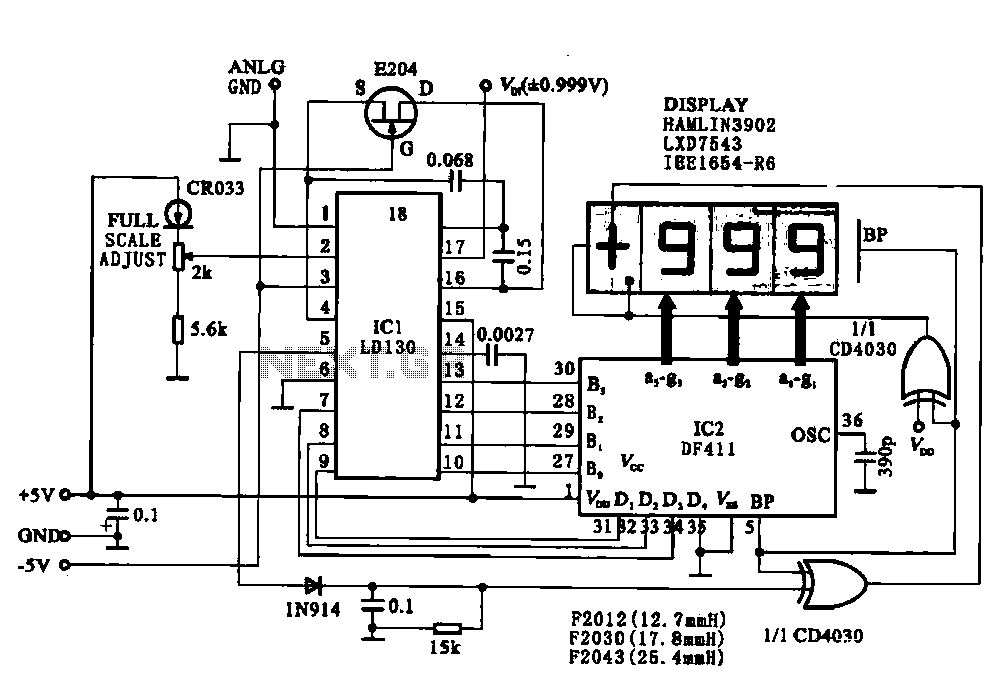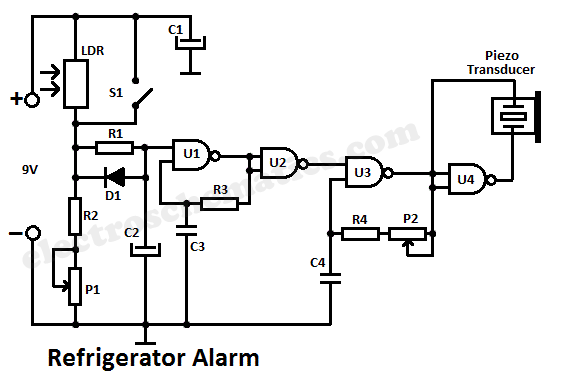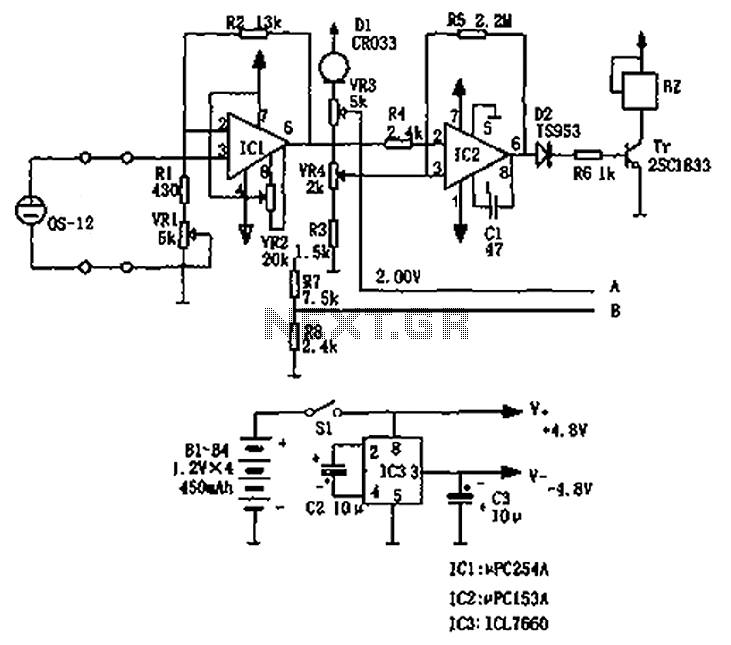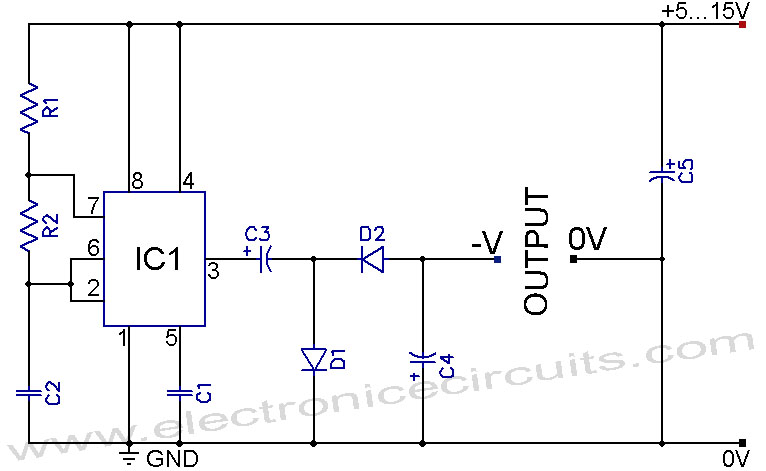
Range precision voltmeter circuit
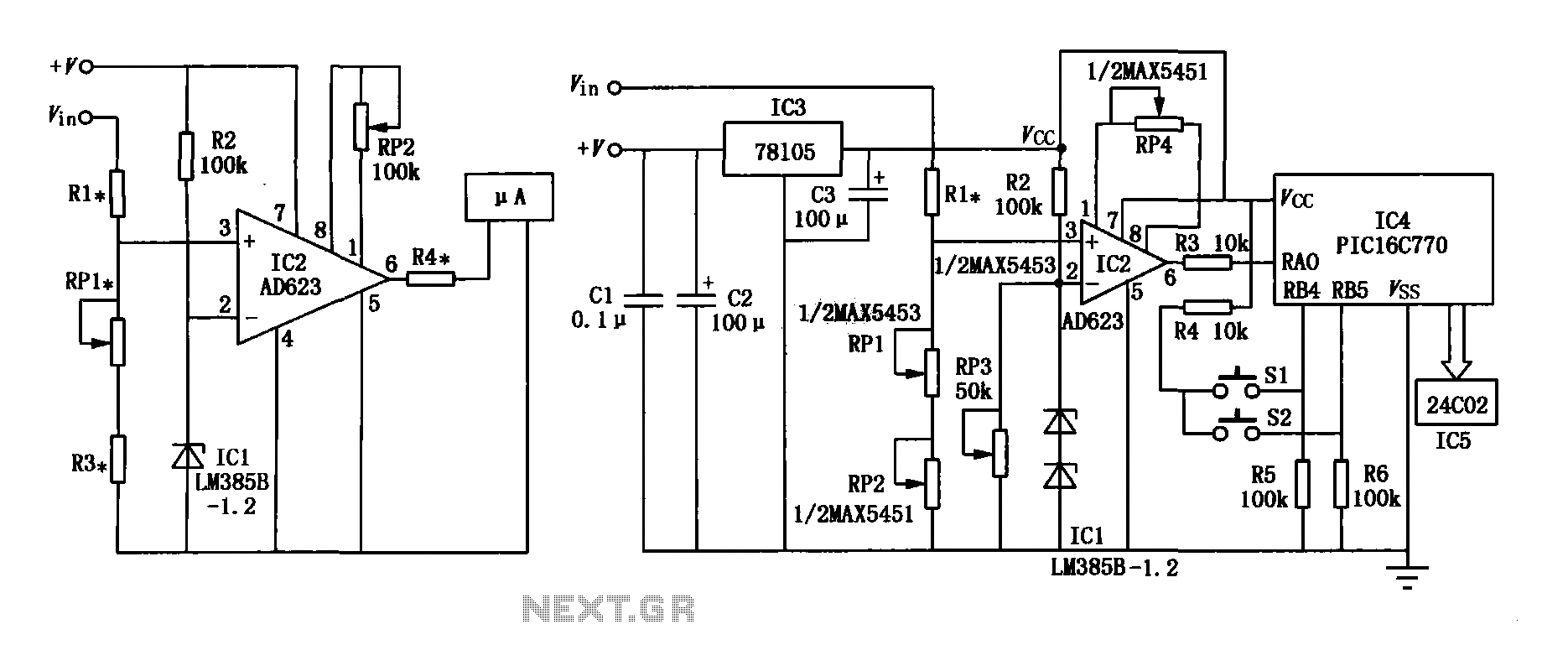
The range precision voltmeter electrical schematic is depicted in Figure (a) below. It features an amplifier circuit and several high-precision components that significantly enhance the performance range of the voltmeter. The inverting input of the instrumentation amplifier AD623 (IC2) utilizes a precision voltage reference source (IC1) for benchmarking. The positive input is connected through resistors R1, RPl, and R3, which divide the measured voltage for amplification. RPl serves as a zero potentiometer, while RP2 is used to adjust the gain. The output of the amplifier is connected to a voltage divider formed by resistors R4, which is linked to a header indicating the start and end values. A range of measured voltage (Vin) can be selected, with the starting value being V1 and the termination value being V2. The measured voltage Vin can vary within the range of V1 to V2. When a standard voltage V1 is applied, potentiometer RPl is adjusted to ensure the output of the amplifier reads 0V, establishing the start value for the interval voltmeter. Conversely, when a standard input voltage V2 is applied, potentiometer RP2 is adjusted to set the header to the full-scale termination of the interval voltmeter. Consequently, as the measured voltage fluctuates between V1 and V2, the first table pointer will move between the start and end values.
The schematic for the range precision voltmeter is designed to provide accurate voltage measurements across a specified range, utilizing key components that enhance its precision and reliability. The AD623 instrumentation amplifier is chosen for its low noise and high input impedance characteristics, which are critical for minimizing measurement errors. The precision voltage reference (IC1) ensures that the amplifier operates under stable conditions, allowing for consistent performance across varying environmental factors.
The resistor network consisting of R1, RPl, and R3 is configured to create a voltage divider that accurately scales the input voltage before amplification. This scaling is essential to ensure that the input voltage remains within the operational limits of the amplifier, preventing saturation and distortion of the output signal. The zero adjustment potentiometer (RPl) allows for fine-tuning of the baseline output, which is crucial for calibrating the voltmeter to provide accurate readings starting from 0V.
Gain adjustment is facilitated by potentiometer RP2, which alters the feedback loop of the amplifier. This feature is particularly useful for accommodating different ranges of input voltages, enabling the voltmeter to be versatile in its applications. The output from the amplifier is then processed through a voltage divider formed by resistor R4, which prepares the signal for display or further processing.
The header connected to the output provides a clear indication of the operational range of the voltmeter, with labeled start and end values that correspond to the selected input voltage range. This visual aid enhances usability, allowing operators to quickly ascertain the operational parameters of the device.
Overall, the design of the range precision voltmeter is focused on achieving high accuracy and reliability in voltage measurements, making it suitable for laboratory and industrial applications where precision is paramount. The integration of high-quality components and thoughtful design choices results in a robust instrument capable of delivering precise voltage readings over a defined range.Range precision voltmeter electrical schematic in Figure (a) below. Amplifier circuit and a number of high-precision components, which greatly improves the performance range of the voltmeter. IC2 inverting input instrumentation amplifier AD623 using a precision voltage reference source ICl do benchmarks. The positive input of Rl, RPl, R3 dividing the measured voltage is amplified. RPl to zero potentiometer, RP2 potentiometer to adjust the gain, the amplifier output voltage divider resistors R4 connected via a labeled start and end values of the header.
Select a range of measured voltage Vin, the starting value V1, the termination value V2, the measured voltage Vin varied within the range of V1 ~ V2. When you enter a standard voltage V1, adjust potentiometer RPl, the output of the amplifier meter is 0V, that is, the start value of the interval voltmeter; input voltage V2 standard, adjust potentiometer RP2, make the header that is full scale termination of the interval voltmeter.
Thus, the measured voltage change between V1 ~ V2 at the time, the first table pointer swing in the start and end values.
The schematic for the range precision voltmeter is designed to provide accurate voltage measurements across a specified range, utilizing key components that enhance its precision and reliability. The AD623 instrumentation amplifier is chosen for its low noise and high input impedance characteristics, which are critical for minimizing measurement errors. The precision voltage reference (IC1) ensures that the amplifier operates under stable conditions, allowing for consistent performance across varying environmental factors.
The resistor network consisting of R1, RPl, and R3 is configured to create a voltage divider that accurately scales the input voltage before amplification. This scaling is essential to ensure that the input voltage remains within the operational limits of the amplifier, preventing saturation and distortion of the output signal. The zero adjustment potentiometer (RPl) allows for fine-tuning of the baseline output, which is crucial for calibrating the voltmeter to provide accurate readings starting from 0V.
Gain adjustment is facilitated by potentiometer RP2, which alters the feedback loop of the amplifier. This feature is particularly useful for accommodating different ranges of input voltages, enabling the voltmeter to be versatile in its applications. The output from the amplifier is then processed through a voltage divider formed by resistor R4, which prepares the signal for display or further processing.
The header connected to the output provides a clear indication of the operational range of the voltmeter, with labeled start and end values that correspond to the selected input voltage range. This visual aid enhances usability, allowing operators to quickly ascertain the operational parameters of the device.
Overall, the design of the range precision voltmeter is focused on achieving high accuracy and reliability in voltage measurements, making it suitable for laboratory and industrial applications where precision is paramount. The integration of high-quality components and thoughtful design choices results in a robust instrument capable of delivering precise voltage readings over a defined range.Range precision voltmeter electrical schematic in Figure (a) below. Amplifier circuit and a number of high-precision components, which greatly improves the performance range of the voltmeter. IC2 inverting input instrumentation amplifier AD623 using a precision voltage reference source ICl do benchmarks. The positive input of Rl, RPl, R3 dividing the measured voltage is amplified. RPl to zero potentiometer, RP2 potentiometer to adjust the gain, the amplifier output voltage divider resistors R4 connected via a labeled start and end values of the header.
Select a range of measured voltage Vin, the starting value V1, the termination value V2, the measured voltage Vin varied within the range of V1 ~ V2. When you enter a standard voltage V1, adjust potentiometer RPl, the output of the amplifier meter is 0V, that is, the start value of the interval voltmeter; input voltage V2 standard, adjust potentiometer RP2, make the header that is full scale termination of the interval voltmeter.
Thus, the measured voltage change between V1 ~ V2 at the time, the first table pointer swing in the start and end values.
